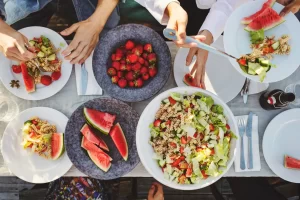What is the Traditional Renal Diet?
3 min read
You’ve probably heard about the Traditional Renal Diet, but what is it and how does it work? To answer that question, we’ve written this article. While this type of diet is a popular choice for many people with Chronic Kidney Disease, it’s not suitable for everyone. If you’re considering this type of diet, it’s important to know exactly what you should not eat, because too much sodium, potassium, or phosphorus may cause problems.
In order to prevent or reverse kidney disease, you should make some dietary changes. While you’ve probably already changed your diet to reduce high-fiber foods and simple carbohydrates, you may be considering changing your diet even further to incorporate more traditional food items. You’ve probably also begun to lose weight, so a “renal diet” might be the perfect way to make this happen. While a renal diet is not suitable for everyone, it’s a good option for those who have kidney disease and who want to keep their weight at a reasonable level.
What foods are allowed on the Traditional Renal Diet? The traditional renal diet was originally created for people with kidney disease who needed dialysis. In addition to limiting the intake of fruits and vegetables, it also restricts the amount of sodium, phosphorous, and potassium. There are many pitfalls to the traditional renal diet, and the diet is very restrictive. If you’re not sure what to eat, make sure to ask your doctor for advice.
Processed foods, like frozen pizza, are a common culprit when it comes to high-sodium, phosphorus, and potassium. This is why it’s recommended to limit these foods on a renal diet. You might also want to limit your intake of cured foods like pickles, olives, and relish. The curing process adds a large amount of salt to these products. While it’s tempting to grab a bag of potato chips, it’s not healthy for your kidneys.
The NEAP (mEq) per day of sodium and potassium is the most common parameter used to estimate the potential acid load. The diet should contain a balanced amount of these minerals. It’s important to note that these values will not necessarily be the same for every patient. Some people may even benefit from a nocturnal dialysis if they’re deficient in potassium and phosphorus. A competent dietitian will be able to balance these various components of the diet to help the patient live a normal life.
While you should avoid foods high in potassium, there are a few exceptions to the rule. While potassium is present in many fruits and vegetables, this mineral is also present in large amounts in dairy products. A traditional renal diet, therefore, discourages the consumption of these foods. You can, however, eat them in moderation. It’s best to avoid foods that contain oxalic acid, such as tomatoes, eggplant, and beets, which are high in potassium but low in sodium.
Fiber content in both VD and LPD is high compared to the CKD diet. In addition, fiber contains the recommended levels of vitamin K1, potassium, and magnesium. In short, both diets are good for your kidneys. You can choose between the Traditional Renal Diet and the Low-Protein Vegan Diet if you’re having trouble eating a balanced diet. It’s important to choose the right one for you and your individual needs.








